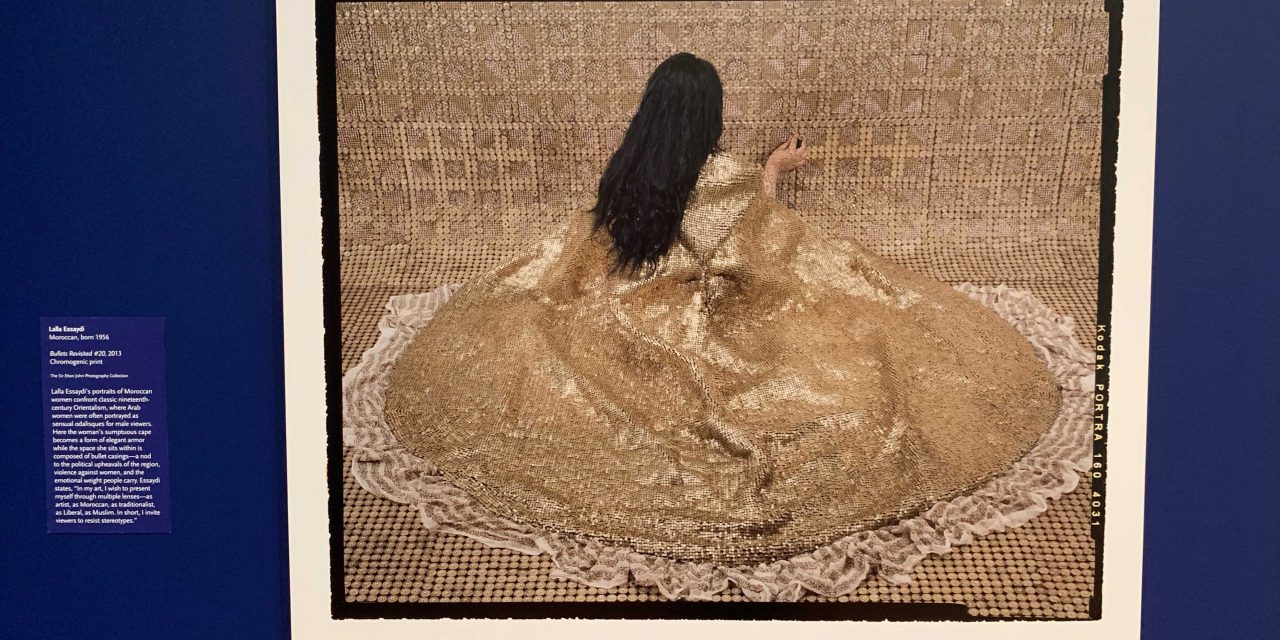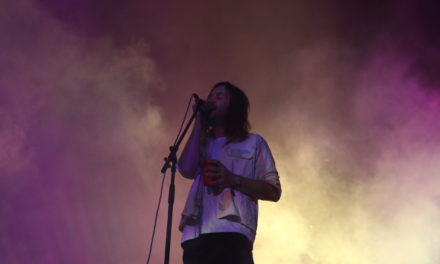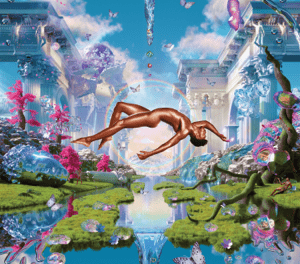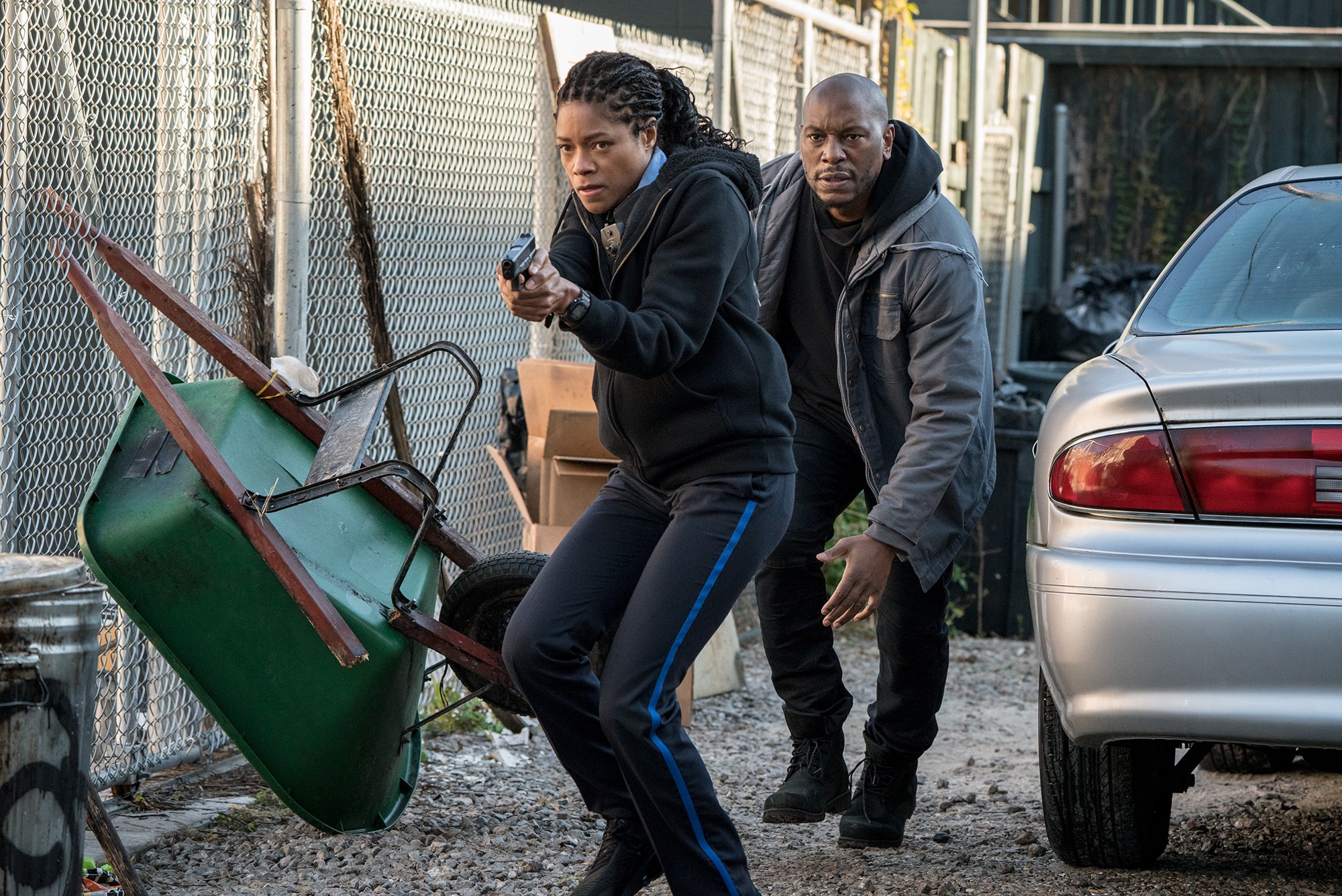Identity is paramount in the High Museum’s latest exhibition, “Underexposed: Women Photographers from the Collection.” The show’s conception attempts to correct a historic imbalance by honoring the underappreciated contributions of women and the intersectional challenges experienced by women of color. The museum labels do an exemplary job of this, constructing a historical narrative of women claiming equality, subverting gender imbalances and politely asking the viewer to consider their own biases.
Likewise, the show explores themes of domesticity and professionalism and the role of women in these spaces. Originally planned for 2020 to commemorate the 19th Amendment centennial, the exhibition was delayed due to COVID-19 and will be on view until Aug. 1. This delay is no disappointment, as female photographers are uniquely positioned to capture the sense of domestic confinement that characterizes the pandemic.

“Bullets Revisited #20” by Lalla Essaydi. (Emory Wheel/Robert Fuhriman)
Featured artists such as Olivia Parker completed their work indoors, allowing them to raise children while pursuing a career. Others chose to subvert the traditionally gendered space of the family home, challenging the mundanity of domesticity by engaging with the surreal. Sandy Skoglund does so in her mauve-cast “Gathering Paradise,” which features an unsettling arrangement of sculpted squirrels in various poses swarming a suburban house. Diane Arbus similarly rethinks suburbia in “A Family on the Lawn One Sunday in Westchester in June,” an image of postwar America that suggests a sinister undercurrent in domestic life. The family members look just awkward and unhappy enough to unnerve the viewer and provoke deeper contemplation.
However, the curation extends beyond the role of women in the home, highlighting professional women as well. Indeed, the exhibition follows a roughly chronological history of women’s contribution to photography and begins with pioneering women who chose to work outside the home in fields such as photojournalism and botanical documentation. Other artists chose to turn the camera outwards, capturing this changing status of women in the workforce.
Frances McLaughlin-Gill’s high-fashion celebration of the professionalization of women in society, “Tweed Suit for August Vogue Collection,” from 1950 is one such document of the changing role of women in society. The elegant glamour of her model is juxtaposed with the humble resilience of a Depression-era woman in Dorothea Lange’s “A Sign of the Times—Mended Stockings—Stenographer—San Francisco” from 1934. Though they depict working women in vastly different economic circumstances, both works dignify their subjects and highlight clothing as a means of self-expression
This increasing economic independence was not evenly distributed across all women, and the exhibition highlights the intersectional nature of gender and race inequality. “Domestic (Betty and Toni)” by Julie Moos depicts a Black woman and a white woman against a simple white background, describing only that one of them employs the other (as referenced in the job title of “domestic”). The viewer is left to draw meaning from the assumptions they make about these women based on body language, dress, race and appearance. Sheila Pree Bright’s “Untitled 13” similarly addresses implicit bias; depicting a Black-owned home in wealthy suburban Atlanta, she leaves only token artifacts of the people who live there and creates a counter-narrative to stereotypes of Black communities.
In a fitting move that highlights individual identity and the subversion of oppressive hierarchies, the exhibition seamlessly integrates revered photographers such as Dorthea Lange, Meghann Riepenhoff and Susan Meiselas alongside lesser-known but similarly innovative woman photographers. The curation tempers its femnist conception and praxis with a certain subtlety. In a reactionary political climate where gender is polarized and feminist art is conflated with exposed genetalia and the general decline of “traditional values,” “Underexposed” seeks to inform more than shock.
Lalla Essaydi’s “Bullets Revisited #20” perhaps best encapsulates the well-mannered assertion of individuality and rebuke of patriarchy found throughout the exhibition. A Moroccan woman’s armor-like cape shrouds her body as she sits in a room lined with bullet casings that form patterns like Islamic tilework. The bullet-shell brass acts as a sort of protection from the Orientalizing tendency to view Arab women as odalisques, sexual objects for the male gaze. The work also acknowledges the civil unrest experienced by Arab people throughout the world.
Like McLaughlin-Gill and Lange, Essaydi uses fashion to explore the identity of specific women and the culture they contribute to. Like Moos and Bright, she artfully inspires her audience to reflect on their socially conditioned racial and gender biases. “In my art, I wish to present myself through multiple lenses — as artist, as Moroccan, as traditionalist, as Liberal, as Muslim” reads a quote from Essaydi on the accompanying museum label. “In short, I invite viewers to resist stereotypes.”
Robert Fuhriman (22C) is from Berkeley, California, and is majoring in history and art history. His interests include architecture, visual arts and drinking Yerba Mate. Fuhriman is also interested in making abstract artistic ideas accessible to more people. Contact Fuhriman at robert.fuhriman@emory.edu.






